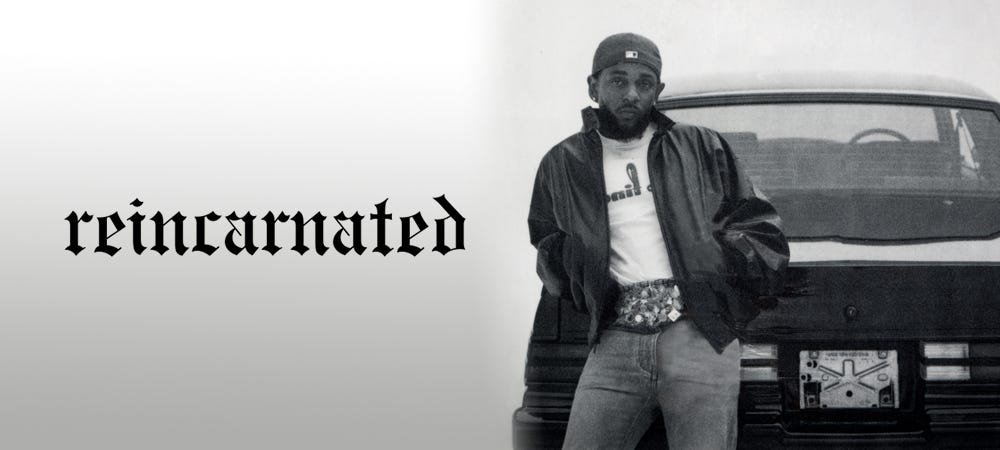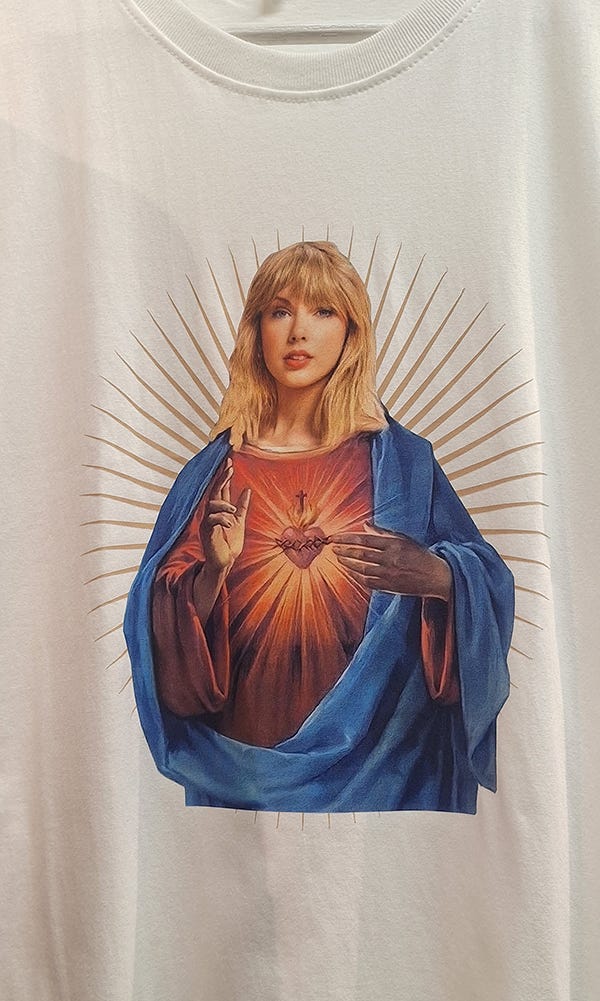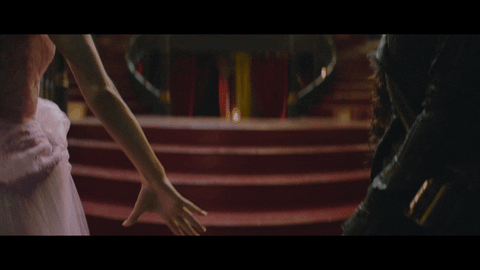I think I’m going to start a series of on-again/off-again, relatively short pieces filed under Art Is…
What is Art? No, what is the thing itself? What is it essentially? I might be right in my conjectures. I might be wrong. This is the start. I try to listen to a lot of new music. Rarely does a new album capture me to the point where I listen to it twice in the same day. Probably a third time by the time you see this. Yet I find it especially hard to write about music—and Kendrick Lamar’s gnx isn’t making it any easier. However, his new album (released without warning) demonstrates that Art Is Revelation. Essentially. At the core of what Art is, it is revealing something about the artist, about the audience, about the context out of which the art has risen.
Now, it’s easy to confuse revelation with understanding. But Art is revelation in the sense of the Latin, lay bare. Art lays bare, but it does not (always) make plain.
It’d take dozens of essays to unpack gnx, and since I have neither the time nor the skill, I’ll use the sixth song on the album, “reincarnated,” as my case-in-point. (It is also my favorite track from this release and has gotten an abundance of relistens.)
At the core, this song is the story of three people (or four, depending on how you count them). It’s also a conversation between two people (or three sets of two people, again depending on how you count them).
I got this fire burnin’ in me from within
Concentrated thoughts on who I used to be, I’m sheddin’ skin
Every day, a new version of me
Kendrick tells his story by looking in the rearview mirror at two artists1 who have preceded him. Two artists in whom he sees himself. The first is likely John Lee Hooker (“let’s take it back to Michigan in 1947”), who ran away from home at 14 (or got kicked out) and eventually became a celebrated blues singer and guitarist. The second is almost certainly Billie Holiday (“another life had placed me as a Black woman in the Chitlin’ Circuit”), the emotive and compelling jazz/swing singer who made a name for herself despite segregation, childhood abuse, and a terminal struggle with heroin.
Kendrick’s lyrics about Hooker and Holiday are a vertical trapdoor in a liminal space, swinging uneasily back and forth. His life and their lives intermingle. He’s telling a true story, but the story is neither fully theirs nor his.
In the third verse, he makes a distinction. “My present life is Kendrick Lamar.”
A rapper looking at the lyrics to keep you in awe
The only factor I respected was raisin’ the bar
My instincts sent material straight to the charts
His chart-topping tendencies gave rise to “ego and pride.” And this, among other things,2 is what has him concerned now. (“Pride goes before a fall,” after all.) Thus, Kendrick enters a dialogue with his father.
“Son, you do well, but your heart is closed
I can tell residue that linger from your past creates a cell”“Father, I’m not perfect, I got urges, but I hold them down”
“But your pride has to die”
“Okay, father, show me how”
This back-and-forth is beautifully written and beautifully performed. Except, as you listen, you wonder if Kendrick is talking solely to his father or to the Father as well. Previously, in this song’s opener, Lamar references his cynicism about “the judgment day.” So God offers him an opportunity, here now, to justify himself.
“Tell me every deed that you’ve done and what you do it for.”
“I kept one hundred institutions paid.”
“Okay, tell me more.”
“I put one hundred hoods on one stage.”
“Okay, tell me more.”
“I’m tryna push peace in L.A.”
“But you love war.”
“No, I don’t,” Kendrick retorts. But the Knower of Men’s Hearts persists, “Oh, yes, you do.” And Kendrick gives in, “Okay, then tell me the truth.” The back-and-forth continues as the Father tells Kendrick who he really is. But the Father appears to be talking through Kendrick to someone else—his own creature, Lucifer.
This dialogue is layered (I love it!): father and son, creator and creature, God and Lucifer. Kendrick is always sitting in the seat of the offspring, a supplicant in these scenarios. He stands now as the one “fallen from Heaven”—Isaiah 14 is explicitly referenced—and receives the aforementioned judgment.
You fell out of Heaven ‘cause you was anxious
Didn’t like authority, only searched to be heinous…
My greatest music director was you…
I sent you down to earth ‘cause you was broken…
Centuries you manipulated man with music
Embodied you as superstars to see how you moving
Kendrick’s obviously playing with the trope of Lucifer as the incredibly musically gifted angel and the superstition that popular musicians and singers have sold their souls to the devil in exchange for their success. He rebuts none of this (that’s not the point here), only offering in response to the Father’s commentary: “all I ever wanted from you was love and approval.”
“reincarnated” is Kendrick’s revelation of self, laying bare his current state of mind. It’s not deconflicted or tidy or easy to assess. He hasn’t figured it out yet. He is Hooker and Holiday and himself and the devil. He’s seen the highs of mortal success and knows the threats that come with. Now he’ll admit the truth of why he really does his “stuff” (“for love and approval”—don’t we all?) despite his claims of it being for peace and philanthropy. There is, of course, some truth to the latter goals, but it’s not all-encompassing.
I can’t remember where I was reading this recently, and I’m sure it’s not a unique commentary. But art is always an interrogation. Good art is honest in that it is a true reflection of something—the artist, the audience, the culture.3 Good art doesn’t have to tell the Truth. But it must tell truth in the sense that it tells what is real. It reveals.
Take this Taylor Swift fan merch I saw at a shop in Camden Market this weekend.
I bet it makes some of you feel uncomfortable. Some of you hate it. Some of you think it shouldn’t exist.
But that is beside the point. It does exist. Someone made it. People are buying and wearing this art because it speaks to them or they take it as ironic (and irony isn’t possible without a literal or actual meaning). Whatever we say, it is art that reveals. And I think we know what this art is revealing.
Art is Revelation. In Kendrick’s case, it’s a revelation of truth. This is why we participate in the give-and-take of the artistic marketplace. We yearn for truth laid bare. Because truth can reincarnate us. Truth can set us free.
I rewrote the devil’s story just to take our power back.
asides + signal boosts*
*because i’m here now so i might as well
🎞️ Watching: I saw Wicked (which is apparently Wicked Part 1). It is so good. And emotive. I’m still not one for breaking out into song in the middle of dialogue, but I really enjoyed it. Excellent storytelling and characterization. Excellent arcs. Can’t wait for part two.
🎧 Listening: Besides gnx? Lots of Max Anson, Audiomachine, Tobe Nwigwe, and 070 Shake.
📖 Reading: The Four Loves, by C.S. Lewis.
🔎 Exploring: everything
These artists are not named in the song; their identity is determined from details given in the lyrics. One or two other candidates can be argued to fit each bill.
I wrote more about this two years ago.
the artist as fallen angel
In his essay, On Three Ways of Writing for Children, C.S. Lewis avers an attitude toward morals in stories that I have adopted (and cited) in defense of the notion that the moral of the story should not, in fact, be the storyteller’s focus. Lewis says:









I’m glad to hear you thought well of Wicked 😁 I’m nervous about seeing it as I love the stage version. However, I have to recommend the original novel - it’s more complicated and nuanced but oh so beautiful for that reason